- Author
travelled to Kashmir twenty years ago and several times over the last two
decades, the last being in August 2021. He shares experiences, then and now
Plus improvements in Roads.
Text by H V Kumar, Photos by Bhaskar Mandakapa/ Hariharan Kumar/ Siddharth Talageri.
The
Lotus is Blooming - and the Nadru Yakni Tastes as Tangy as Before.
![]()
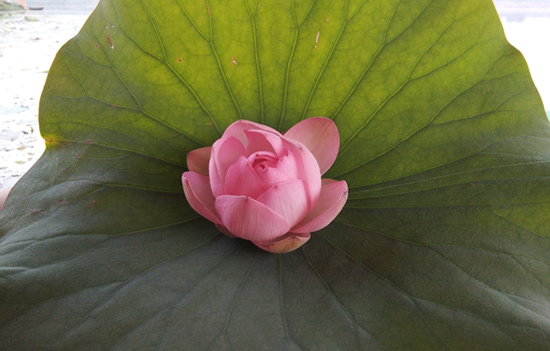 Nadru Dakhni is a favourite Kashmiri dish. Made out of Lotus Shoots, is grown in Dal Lake, Srinagar.
Nadru Dakhni is a favourite Kashmiri dish. Made out of Lotus Shoots, is grown in Dal Lake, Srinagar.
Two decades ago, when I parked my car in the Shalimar Gardens in Srinagar, a taxi driver saw my car’s Mumbai number plate and came across to extend courtesies. He confided that he had left Mumbai for good after working there for several years because he feared another Partition was imminent-that of Kashmir breaking away from the Rest Of India – and he did not want to be on the wrong side, stranded in Mumbai with his family stuck in another country. So he came back to be in his own city living with his family. He also confessed that ordinary Kashmiris like him were closing their “Indian” bank accounts and transferring it all to their “own bank” J&K Bank.
Those were uncertain days in the decade following the Hindu genocide of the ‘90s-every other day, there were protests, bandhs and killings. The owner of the houseboat I was staying at lamented the fact that he had to turn to daily wages as a construction worker to keep going. Signages everywhere proclaimed KMR (how they referred to Kashmir), no any mention of Jammu and Kashmir State or India. You were accosted by everyone with the greeting, “How are things in YOUR India?” Every time I got back to my car, I used to kneel down and peer underneath to check if anyone had strapped a bomb- since car bomb explosions were pretty commonplace those days.
I have been to Kashmir several times since the winter of 2002. The “Indian” tourist is courted for his spending power, but the smile on the face masks the hostility beneath. Be suave and reply with a straight face, Yes, Kashmir is Paradise on Earth, it evokes a wider smile and a sneer of superiority. It is a bit like India’s obsession with the Taj. If you travel across India might realize there is a lot more
to India than the Taj.
The
Kashmiri society was marked with contrasts-there are super-friendly people,
there are some very unfriendly ones too. The tourist has to straddle both these
worlds with care, avoiding causing any offence by discussing local politics or
their aspirations to go independent or with Pakistan.
I
have been to small villages where they proudly told me that 90% of the Hindus
had been massacred or driven out. A friend who asked directions to go to a
restaurant during the holy month of Ramzan was almost assaulted. You ask to go
to the famed Kheer Bhavani Temple near Ganderbal, there is sullen silence, and
every person you ask for directions shrugs his shoulders. A couple of years
ago, when I went looking for the ruins of the famous Martand Sun Temple near
Anantnag, every local pretended not to know about it, even when I was almost in
front of it!
 Lal Chowk, Srinagar. The epicentre of many agitations.
Lal Chowk, Srinagar. The epicentre of many agitations.
These are vignettes of society in the Kashmir Valley I
encountered. But Kashmir is changing.
During a trip to the Valley a month ago, I noticed a remarkable change. No bandhs, no protests, activities underway notwithstanding the COVID19 lockdown. New cars, New shops, New roads, New energy. Army presence is lot less visible, the “encounters” keep happening, but they are localised episodes and rarely appear to evoke any reactions of the general populace. They tell me that they had a reasonably good tourist season this year, coming after 3 – 4 years (ever since 2016) of drought in arrivals of domestic tourists.
You can still sense the sneer and the contempt they have for
India and Indianness, and “Kashmiriyat” word is mouthed often in conversations. We did meet several who hint at independence or merger with Pakistan, and the constant haranguing on how the abrogation of Article 370 has taken Kashmir back several decades. Yes, they are worried about being overwhelmed by “outsiders” but haven’t we heard the same jingoistic voices in other regions of India too?
One local panchayat member lamented that the discretionary funds granted to them earlier have been withdrawn, and how powers are now centralised with the Lt Governor or the Central Government. It was amusing how one of the disgruntled blamed the ongoing power outages on the Central Government “stealing” electricity generated by Kashmir-on further enquiry
we found that electricity was being turned off as per a pre-defined schedule to
re-locate electricity poles to facilitate road widening!
There
is excellent mobile connectivity thanks to the Jios and the Airtels, and rarely
is data turned off as it was before.
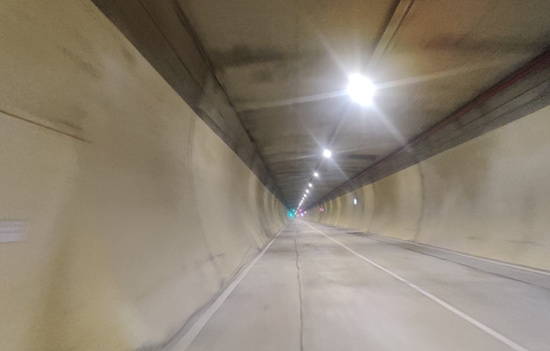 The New Banihal-Qazigund Tunnel marks the entry point into Kashmir.
The New Banihal-Qazigund Tunnel marks the entry point into Kashmir.
Driving
from Jammu to Srinagar itself is turning out to be a pleasurable experience
compared with the nightmare of traffic jams, landslides and sundry disruptions
of earlier years. Road widening is fast progressing, with lots of upgradations underway
like bypasses through messy small towns. The journey that used to last
indefinitely is now reduced to 7-9 hours.
One
of the most significant achievements this year was the opening of the 9 km long
Banihal-Qazigund Tunnel that now cuts out the painful climb up to the Jawahar
Tunnel which becomes snowbound in winter occasionally. Quite an engineering
marvel, the new Tunnel compliments the other 9 km long Chenani-Nashri
Tunnel that became operational 4-5 years ago.
One
would expect the entire Jammu-Srinagar highway to be fully 4-laned one to two
years from now, banishing forever the nightmares that trucks and cars faced in
the past.
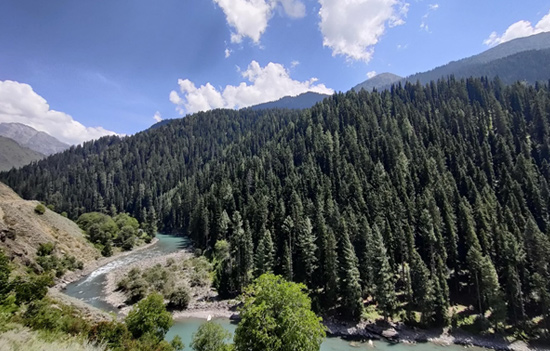 Gurez Valley is welcoming tourists.
Gurez Valley is welcoming tourists.
Roads
across Kashmir Valley are also being upgraded and the crucial Srinagar- Kargil
highway will soon see the Zoji la Tunnel, which is slated for completion before
end-2023. Soon, Kashmir will also be connected by rail to the rest of the
country, and maybe in the next two years it will be easier to take a train
journey from Qazigund to Baramulla through a
countryside covered in snow-truly an Alpine experience in India!
There
is palpable change in Kashmir, and both economic and social development is fast
catching up. Roads are generally in excellent condition, power outages are a
thing of the past.
The
Gram Sadak Yojana appears to be implemented
efficiently, I could see several new rural roads. The apple harvest season was
starting, and unlike the turmoil two years ago, movement of commodities is
happening smoothly. The fact that Jammu and Kashmir is among the top States in
the penetration of the ongoing Covid19 vaccination programme is fairly
indicative of the improved health infrastructure in the State.
I could do a RTPCR Test cheaper and faster than I can do back home in Mumbai, so Srinagar is quite on par with any other city in India when it comes to facilities -and probably more efficient too! I read the announcement that the Government is asking Kashmiri Pandits to come forward to reclaim the properties they lost during the genocide of the ‘90s.
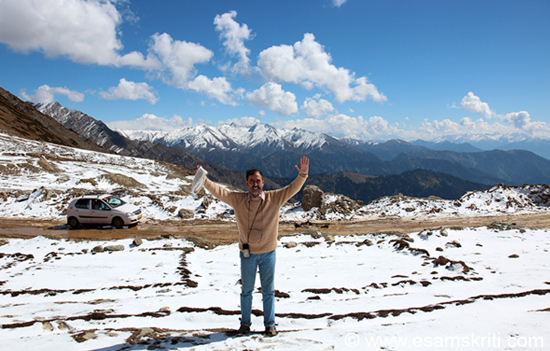 Sinthan Pass (12,450 feet) divides Kashmir from Jammu region. 2014.
Sinthan Pass (12,450 feet) divides Kashmir from Jammu region. 2014.
One can see still Indian Army jawans patrolling the roads surveying for land mines and doing general surveillance, but one feels safe now unlike a few years ago when you could slice through the fear and uncertainty. No army jawan asked me why I was so irresponsibly touring Kashmir-in earlier years, they used to rebuke me for being stupid enough to visit a troubled region wracked by terrorism with disapproving words like “Don’t you read the papers how bad the situation here is” and “can’t you see us dying, do you want to get killed too?” and so forth.
It is difficult to say if the worst is over for Kashmir.
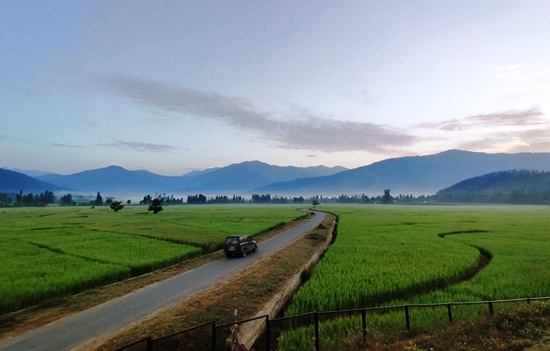 A new dawn for Kashmir Valley
A new dawn for Kashmir Valley
But
it does appear that, for the casual visitor, there is near-normalcy despite the
underlying social turmoil. Kashmir no more evokes fearful images of explosions,
killings and disruptions, India is rediscovering the beauties of this region as
more tourists visit the Gulmargs, Sonamargs and Pahalgams. Although the COVID19
lockdown does have impact, I can see common people going about their daily
economic activities unperturbed.
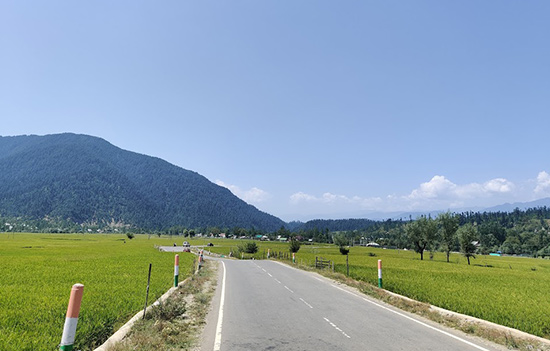 Lolab Valley.
Lolab Valley.
When
our car broke down in a far-off corner of Western Kashmir, the efficient manner
in which the local mechanics repaired it will beat systems in the larger cities
of India. One can visit the farthest corners of Kashmir without fear and most
locals are happy to see the tourists come back.
Tourism
helps bridge cultural gaps and gloss over animosities-and economic revival
could be one of the balms to heal the wounds of the long war in Jammu and Kashmir.
Author H V Kumar runs a very popular Facebook page on road travel. “There is nobody as expert as HV Kumar (HVK) on knowledge about Indian Highways and Automotive Transport. The magnitude and the detailing of precious and up to date information he has is mind boggling and absolutely unmatched.” To access FB page click HERE
To read all articles
by author
Also read
1.
Poonch album
in Jammu region
2.
Drive
through Sinthan Pass (in Valley) to Kishtwar in Jammu region
3.
Kishtwar
in Jammu region during snow
4.
Jammu,
City of Temples
5.
Surya
Martand Mandir, Anantnag
6.
Temples
of Kashmir, you may not know of
7.
Ancient
Legacy of Kashmir
8.
Handlooms
of Jammu and Kashmir
9.
Lalitaditya,
the great Kashmiri King
10.
Remembering
Lal Ded, the Kashmiri Yogini
11.
Mansar
Lake near Jammu
12.
Verinag is
from where river Jhelum starts from a Kund
13.
What
happened in Kashmir during the 1990s
14.
All
you wanted to know about the Accession of J&K to India
15.
2017
article, Be Careful you are in South Kashmir now
16.
Rajrishi
Kashyapa
17.
Silence on Kashmir’s Historical Identity